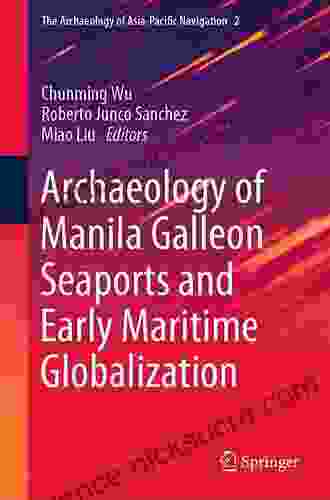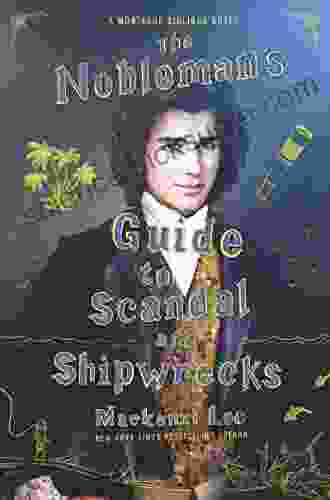Archaeology of Manila Galleon Seaports and Early Maritime Globalization

The Manila galleon trade, which spanned the 16th to 19th centuries, played a pivotal role in shaping the course of global history. This trans-Pacific maritime route, connecting Spanish colonies in the Philippines to the Americas, facilitated the exchange of goods, ideas, and technologies between East and West. The archaeology of Manila galleon seaports sheds light on the intricate networks, cultural encounters, and economic transformations that characterized this era of early maritime globalization.
5 out of 5
| Language | : | English |
| File size | : | 132359 KB |
| Text-to-Speech | : | Enabled |
| Screen Reader | : | Supported |
| Enhanced typesetting | : | Enabled |
| Word Wise | : | Enabled |
| Print length | : | 471 pages |
The Spanish Empire and the Galleon Trade
The Spanish Empire established a foothold in the Philippines in the 16th century. Manila, the capital of the colony, became a hub for trade and commerce, attracting merchants from across Southeast Asia, China, and Japan. In 1565, the Spanish authorities inaugurated the Manila-Acapulco galleon trade route to transport silver from the Americas to Asia, where it was used to purchase luxury goods, such as spices, porcelain, and silk.
The galleon trade flourished for over two centuries, transforming Manila into a cosmopolitan city and a gateway to the East. However, the route was fraught with perils. Spanish galleons were often targeted by pirates, storms, and hostile indigenous groups. The long and arduous journey across the Pacific Ocean also posed significant challenges to sailors and passengers.
Archaeological Investigations at Manila Galleon Seaports
Archaeological excavations at Manila galleon seaports have provided valuable insights into the daily lives, economic activities, and cultural interactions that took place at these bustling hubs. Excavations at Manila's Intramuros district, the former walled city, have unearthed evidence of warehouses, shipyards, and other maritime infrastructure. Artifacts recovered from these sites include ceramics, coins, and navigational instruments, showcasing the diverse range of goods and technologies that flowed through the port.
Archaeological investigations at other galleon seaports, such as Acapulco in Mexico and Cavite in the Philippines, have further illuminated the complexities of the trade network. Excavations at Acapulco have revealed the presence of Chinese and Filipino communities, who played significant roles in the trans-Pacific exchange.
Cultural Encounters and Transcultural Exchange
The Manila galleon trade facilitated not only the movement of goods but also the exchange of ideas, beliefs, and artistic traditions. Spanish missionaries traveled to the Philippines and other Asian countries, introducing Christianity and European culture to the region. Simultaneously, Asian merchants and artisans introduced their own cultural practices and technologies to the Americas.
Archaeological excavations at Manila galleon seaports have uncovered evidence of this transcultural exchange. Artifacts such as Chinese ceramics decorated with Spanish motifs and European silverware influenced by Asian designs attest to the blending of cultural influences that occurred during this period.
Economic Transformations and Global Capitalism
The Manila galleon trade had a profound impact on the global economy, contributing to the rise of capitalism and the circulation of wealth. Silver from the Americas flowed eastward, stimulating economic growth and urbanization in Asia. In Europe, the influx of Asian luxury goods fueled consumer demand and led to the development of new industries and trading networks.
Archaeological research at Manila galleon seaports has shed light on the economic transformations that accompanied the trade. Excavations have identified warehouses, markets, and other commercial establishments that facilitated the exchange of goods. The discovery of large quantities of Chinese porcelain and other Asian goods in European markets свидетельствует о масштабах and scope of the trade.
End of the Galleon Trade and Its Legacy
The Manila galleon trade declined in the late 18th century due to a combination of factors, including the growing power of European rivals, the decline of silver production in the Americas, and the rise of new trade routes. The last galleon voyage took place in 1815, marking the end of an era.
Despite its decline, the Manila galleon trade left a lasting legacy. It fostered cultural exchange, stimulated economic growth, and contributed to the development of global capitalism. The archaeology of Manila galleon seaports provides us with a tangible connection to this transformative period in history, offering insights into the interconnectedness and complexities of human interaction in the age of early globalization.
The archaeology of Manila galleon seaports offers a captivating glimpse into the interconnected world of early maritime globalization. The excavation of these sites has illuminated the networks of trade, cultural exchange, and economic transformations that shaped the course of human history. By studying the material remains of the galleon trade, we gain a deeper understanding of the complexity of global interactions and the enduring legacy of this pivotal era.
Image Sources
- Manila galleon by B-g (Public domain)
- Intramuros, Manila by Nono1969 (CC BY-SA 3.0)
- Chinese porcelain with Spanish motifs by Archaeodontosaurus (CC BY-SA 4.0)
5 out of 5
| Language | : | English |
| File size | : | 132359 KB |
| Text-to-Speech | : | Enabled |
| Screen Reader | : | Supported |
| Enhanced typesetting | : | Enabled |
| Word Wise | : | Enabled |
| Print length | : | 471 pages |
Do you want to contribute by writing guest posts on this blog?
Please contact us and send us a resume of previous articles that you have written.
 Fiction
Fiction Non Fiction
Non Fiction Romance
Romance Mystery
Mystery Thriller
Thriller SciFi
SciFi Fantasy
Fantasy Horror
Horror Biography
Biography Selfhelp
Selfhelp Business
Business History
History Classics
Classics Poetry
Poetry Childrens
Childrens Young Adult
Young Adult Educational
Educational Cooking
Cooking Travel
Travel Lifestyle
Lifestyle Spirituality
Spirituality Health
Health Fitness
Fitness Technology
Technology Science
Science Arts
Arts Crafts
Crafts DIY
DIY Gardening
Gardening Petcare
Petcare Lisa Marasco
Lisa Marasco Ged Jenkins Omar
Ged Jenkins Omar Samuel Carbaugh
Samuel Carbaugh Aidan Comerford
Aidan Comerford David Jason
David Jason John Muir
John Muir Kim Stanley Robinson
Kim Stanley Robinson James Gleick
James Gleick Dmitry Zinoviev
Dmitry Zinoviev Francesca Lia Block
Francesca Lia Block Shing Tung Yau
Shing Tung Yau Rene D Zweig
Rene D Zweig David Crabtree
David Crabtree Mackenzi Lee
Mackenzi Lee Mendocino Press
Mendocino Press Laurie Pickard
Laurie Pickard Judy Jewell
Judy Jewell Jessica Battilana
Jessica Battilana Craig Childs
Craig Childs Rob Casey
Rob Casey Anne Enright
Anne Enright Christopher Gavigan
Christopher Gavigan Lex Croucher
Lex Croucher Erin Ekins
Erin Ekins Orson Scott Card
Orson Scott Card Mista Nove
Mista Nove Toby Wilkinson
Toby Wilkinson Janet Houser
Janet Houser David A Sousa
David A Sousa George E Andrews
George E Andrews Denise Alvarado
Denise Alvarado Michael Morpurgo
Michael Morpurgo Robin Mckinley
Robin Mckinley Amye Archer
Amye Archer Hervey Garrett Smith
Hervey Garrett Smith Emeran Mayer
Emeran Mayer Melissa Bashardoust
Melissa Bashardoust Molly Absolon
Molly Absolon Christopher Hellman
Christopher Hellman Thomas Metzinger
Thomas Metzinger Zondervan
Zondervan Kevin B Shearer
Kevin B Shearer William A Kaplin
William A Kaplin Nick Hughes
Nick Hughes Deitra Leonard Lowdermilk
Deitra Leonard Lowdermilk Chris Bowers
Chris Bowers Franz Metcalf
Franz Metcalf Magnus Thollander
Magnus Thollander James Willard Schultz
James Willard Schultz Lingo Mastery
Lingo Mastery Robert L Kelly
Robert L Kelly Habeeb Quadri
Habeeb Quadri Matthew Mcbee
Matthew Mcbee Susan B Lovejoy
Susan B Lovejoy Sheila Barton
Sheila Barton J R Haseloff
J R Haseloff Conor Daly
Conor Daly Jay Speight
Jay Speight John T Hansen
John T Hansen Suze Guillaume
Suze Guillaume Kidada Jones
Kidada Jones Penney Peirce
Penney Peirce Layla Moon
Layla Moon Ann Hagedorn
Ann Hagedorn Janice Selekman
Janice Selekman Andrea Travillian
Andrea Travillian Christopher Willard
Christopher Willard Larry Wasserman
Larry Wasserman Catherine Belknap
Catherine Belknap Stephen M Camarata
Stephen M Camarata Nina Lacour
Nina Lacour Alan Murchison
Alan Murchison Aiva Books
Aiva Books Daphne Rose Kingma
Daphne Rose Kingma Jenni Hicks
Jenni Hicks Ndeye Labadens
Ndeye Labadens Jill Homer
Jill Homer Kerstin Gier
Kerstin Gier Steven H Strogatz
Steven H Strogatz Jakob Tanner
Jakob Tanner Patrick O Sullivan
Patrick O Sullivan Jon Emmett
Jon Emmett Aileen Evans
Aileen Evans Courtney Macavinta
Courtney Macavinta Akil Palanisamy
Akil Palanisamy Donald Woods Winnicott
Donald Woods Winnicott Alastair Humphreys
Alastair Humphreys Al Yellon
Al Yellon James A Michener
James A Michener S Connolly
S Connolly Tom Shachtman
Tom Shachtman Alan Rouse
Alan Rouse Dylan Alcott
Dylan Alcott Don Casey
Don Casey Mark Harris
Mark Harris Matt Mosher
Matt Mosher Rebekah Sack
Rebekah Sack Vera Nazarian
Vera Nazarian Al Macy
Al Macy Michael Freedland
Michael Freedland Alan R Hall
Alan R Hall Kareem Abdul Jabbar
Kareem Abdul Jabbar Natazha Raine O Connor
Natazha Raine O Connor Ilan Dvir
Ilan Dvir Alan Garner
Alan Garner Dorothy H Crawford
Dorothy H Crawford Kiersten White
Kiersten White Christopher Scordo
Christopher Scordo Bill Friedrich
Bill Friedrich Marsha Wenig
Marsha Wenig Jacqueline Fitzpatrick
Jacqueline Fitzpatrick Saul Rip
Saul Rip Nicholas Romanov
Nicholas Romanov Bryon Powell
Bryon Powell Mark Drolsbaugh
Mark Drolsbaugh Lisa Newton
Lisa Newton Sonia Nazario
Sonia Nazario Florence Williams
Florence Williams Isabella Morris
Isabella Morris Jack Nicklaus
Jack Nicklaus Terry Funk
Terry Funk Mike Martin
Mike Martin Charles B White
Charles B White George Plimpton
George Plimpton Judith Garrard
Judith Garrard Benjamin Johnston
Benjamin Johnston Dawn Sakamoto Paiva
Dawn Sakamoto Paiva Dusty Rhodes
Dusty Rhodes Dimitri Loose
Dimitri Loose Anne Dachel
Anne Dachel Lexie Scott
Lexie Scott Sarah Hendrickx
Sarah Hendrickx Dean Burnett
Dean Burnett Al Marlowe
Al Marlowe Steve Michalik
Steve Michalik Yang Jwing Ming
Yang Jwing Ming Bob Mayer
Bob Mayer Terry L Duran
Terry L Duran Bianca Smith
Bianca Smith David D Burns
David D Burns Michael Miller
Michael Miller Alex Light
Alex Light Al Ristori
Al Ristori Martin Rooney
Martin Rooney Marcus Chown
Marcus Chown Nilakantasrinivasan J Neil
Nilakantasrinivasan J Neil Alan E Kazdin
Alan E Kazdin Bob Plott
Bob Plott Wayne Stewart
Wayne Stewart Tina Dreffin
Tina Dreffin John H Moore
John H Moore Kate Bettison
Kate Bettison Samuel N Rosenberg
Samuel N Rosenberg Leigh Sales
Leigh Sales Erica Westly
Erica Westly James Witts
James Witts Tim Gallagher
Tim Gallagher Alan Hearnshaw
Alan Hearnshaw Jane Poynter
Jane Poynter Sara Wickham
Sara Wickham Jacqueline Church Simonds
Jacqueline Church Simonds Joanne Webb
Joanne Webb Satya Sundar Sethy
Satya Sundar Sethy Melinda Rushe
Melinda Rushe Edupan7 Publishing
Edupan7 Publishing Alana Chernila
Alana Chernila Betsy Tobin
Betsy Tobin Alice Scordato
Alice Scordato Ken Denmead
Ken Denmead Aphra Behn
Aphra Behn Micky Ward
Micky Ward Olivia Gentile
Olivia Gentile Alana Mclaren
Alana Mclaren Gavin Francis
Gavin Francis Vasilis Konstantinos Giontzis
Vasilis Konstantinos Giontzis James F Boswell
James F Boswell William Harding
William Harding Martin Erwig
Martin Erwig Meredith Marsh
Meredith Marsh Gregory J Davenport
Gregory J Davenport Massad Ayoob
Massad Ayoob Rehana Jawadwala
Rehana Jawadwala Jonathan White
Jonathan White Kelly Jensen
Kelly Jensen Dave Whitson
Dave Whitson Juno Roche
Juno Roche Jill Stamm
Jill Stamm Arnold Haultain
Arnold Haultain Aileen Nielsen
Aileen Nielsen Gary B Ferngren
Gary B Ferngren United States Government Us Marine Corps
United States Government Us Marine Corps E A Koetting
E A Koetting Erin Lovelace
Erin Lovelace Tenth Edition Revised Kindle Edition
Tenth Edition Revised Kindle Edition Will Storr
Will Storr Brandy Roon
Brandy Roon Truman Everts
Truman Everts Clint Emerson
Clint Emerson Kai Nacke
Kai Nacke Pavel Tsatsouline
Pavel Tsatsouline Aitzaz Imtiaz
Aitzaz Imtiaz Stephanie Izard
Stephanie Izard Carl Gustav Jung
Carl Gustav Jung George Monbiot
George Monbiot Kiku Hughes
Kiku Hughes Joe Clement
Joe Clement M K Hume
M K Hume William Foote Whyte
William Foote Whyte We Fairbairn
We Fairbairn Sam J Fires
Sam J Fires Margaret J Wheatley
Margaret J Wheatley Douglas T Hall
Douglas T Hall Antipodean Writer
Antipodean Writer Alan Graham
Alan Graham Julie Bradley
Julie Bradley John Irving
John Irving Vanessa Ogle
Vanessa Ogle Amy Edelstein
Amy Edelstein Jim Steenburgh
Jim Steenburgh Lee Carroll
Lee Carroll Vernon Coleman
Vernon Coleman Howard Maxwell
Howard Maxwell Kardas Publishing
Kardas Publishing Daniel C Okpara
Daniel C Okpara Teresa Mccallum
Teresa Mccallum Martin J Pring
Martin J Pring Robert Heidler
Robert Heidler Al Roker
Al Roker Gary Smith
Gary Smith Alan Burdick
Alan Burdick Steven Trimble
Steven Trimble Taquetta Baker
Taquetta Baker Vishwesh Bhatt
Vishwesh Bhatt Bill Walker
Bill Walker Jane P Gardner
Jane P Gardner Hiro Ainana
Hiro Ainana Alan Margot
Alan Margot Aileen Erin
Aileen Erin Collins Easy Learning
Collins Easy Learning Robert M Emerson
Robert M Emerson Elizabeth Thompson
Elizabeth Thompson Amelia Simmons
Amelia Simmons Emily Harris Adams
Emily Harris Adams Eddy Starr Ancinas
Eddy Starr Ancinas Zita West
Zita West Brian Mills
Brian Mills Peter Ballingall
Peter Ballingall Dr Joseph Parent
Dr Joseph Parent Jan Smith
Jan Smith Original Edition Kindle Edition
Original Edition Kindle Edition Nassim Nicholas Taleb
Nassim Nicholas Taleb Michael Gray
Michael Gray Sara Hanover
Sara Hanover The Rogue Hypnotist
The Rogue Hypnotist Kristine Barnett
Kristine Barnett Gary R Varner
Gary R Varner Albert Einstein
Albert Einstein Kevin Williams
Kevin Williams Peter Irvine
Peter Irvine David Roberts
David Roberts Belinda Luscombe
Belinda Luscombe Alan Shipnuck
Alan Shipnuck Dennis Jarecke
Dennis Jarecke Trevor Lund
Trevor Lund Dan Dipiro
Dan Dipiro Paramahansa Yogananda
Paramahansa Yogananda Harriet Brown
Harriet Brown Gary Player
Gary Player Juliet Marillier
Juliet Marillier Jay H Lefkowitch
Jay H Lefkowitch S A Klopfenstein
S A Klopfenstein David F Kelly
David F Kelly Christos A Djonis
Christos A Djonis Linda Welters
Linda Welters Jane Bottomley
Jane Bottomley Lisa Kenney
Lisa Kenney Elaine Howard Ecklund
Elaine Howard Ecklund Amelia Mayer
Amelia Mayer Deborah Harkness
Deborah Harkness Edward A Tiryakian
Edward A Tiryakian Alan Booth
Alan Booth Michael Casey
Michael Casey Rose Lynn Fisher
Rose Lynn Fisher Jessica Cornwell
Jessica Cornwell Mel Thompson
Mel Thompson John Feinstein
John Feinstein J Zoltan
J Zoltan Jonathan Gottschall
Jonathan Gottschall Anna Hickey Moody
Anna Hickey Moody Rebecca Jones
Rebecca Jones Al Pasha
Al Pasha Lauren Blackwood
Lauren Blackwood Timm Woods
Timm Woods Dr David Geier
Dr David Geier Gill Rapley
Gill Rapley Publishdrive Edition Kindle Edition
Publishdrive Edition Kindle Edition Akwaeke Emezi
Akwaeke Emezi John Leo
John Leo Michael W King
Michael W King Shoshana Levin Fox
Shoshana Levin Fox Markus Rex
Markus Rex Noel St Clair
Noel St Clair David Vine
David Vine Barbara Scott
Barbara Scott Howard Hill
Howard Hill Andy Adams
Andy Adams Lo Bosworth
Lo Bosworth Tonya Johnston
Tonya Johnston Timothy C Smith
Timothy C Smith John Bird
John Bird Terry Breverton
Terry Breverton Robert Macfarlane
Robert Macfarlane Jacqueline Tourville
Jacqueline Tourville G H Hardy
G H Hardy Dave Heller
Dave Heller Kevin Hunter
Kevin Hunter Hope Smith
Hope Smith Bradley Efron
Bradley Efron Paul G Schempp
Paul G Schempp Mark Occhilupo
Mark Occhilupo Andre Agassi
Andre Agassi Thubten Chodron
Thubten Chodron Chris Klug
Chris Klug Celeste Jones
Celeste Jones G E R Lloyd
G E R Lloyd Ron L Deal
Ron L Deal Charles J Thayer
Charles J Thayer R A Salvatore
R A Salvatore Scott Surovich
Scott Surovich Mark Booth
Mark Booth Ken Schultz
Ken Schultz W E Fairbairn
W E Fairbairn Jay Annelli
Jay Annelli Gail Tully
Gail Tully Eden O Neill
Eden O Neill Alan Watts
Alan Watts Mykel Hawke
Mykel Hawke Katharine Graves
Katharine Graves Hammad Fozi
Hammad Fozi Princess Her
Princess Her Hannah Ewens
Hannah Ewens Bruce J Macfadden
Bruce J Macfadden Jamie Baulch
Jamie Baulch Charlotte Markey
Charlotte Markey Mike Warren
Mike Warren Jackson Katz
Jackson Katz Cynthia Clumeck Muchnick
Cynthia Clumeck Muchnick Alan E Sparks
Alan E Sparks Jon Tyson
Jon Tyson Nancy Hughes
Nancy Hughes Peter Hathaway Capstick
Peter Hathaway Capstick Pantea Kalhor
Pantea Kalhor Sandy Lindsey
Sandy Lindsey John Riley
John Riley Donna Morang
Donna Morang Al Owens
Al Owens Alan Lawrence Sitomer
Alan Lawrence Sitomer Amanda Ford
Amanda Ford Sophia Joy
Sophia Joy Alan S Gurman
Alan S Gurman Contractor Education Inc
Contractor Education Inc Alan Porter
Alan Porter Michael Shermer
Michael Shermer Gina Guddat
Gina Guddat Bettina Gordon Wayne
Bettina Gordon Wayne Jeremy Miles
Jeremy Miles Helena Clare
Helena Clare Nick Lyons
Nick Lyons Carol Tuttle
Carol Tuttle Pallas Snider
Pallas Snider Megan Gray Md
Megan Gray Md Sir Edmund Hillary
Sir Edmund Hillary Al Desetta M A
Al Desetta M A Doug Gelbert
Doug Gelbert Michal Stawicki
Michal Stawicki Steven Horak
Steven Horak Morgan Lyle
Morgan Lyle Harold Klemp
Harold Klemp Mark Goulston
Mark Goulston Len Sperry
Len Sperry Miles Mckenna
Miles Mckenna 12th Edition Kindle Edition
12th Edition Kindle Edition I Johnson
I Johnson Frances E Jensen
Frances E Jensen Louis Schubert
Louis Schubert Tod E Bolsinger
Tod E Bolsinger Jordon Greene
Jordon Greene Grace Lebow
Grace Lebow Cat Warren
Cat Warren Peg Tyre
Peg Tyre Gordon R Dickson
Gordon R Dickson Alan Vermilye
Alan Vermilye Roxy And Ben Dawson
Roxy And Ben Dawson Douglas G Altman
Douglas G Altman Madeline Milne
Madeline Milne Jeff Maynard
Jeff Maynard Alan C Acock
Alan C Acock Aimee Aristotelous
Aimee Aristotelous Aja Raden
Aja Raden Arnold Yates
Arnold Yates Farlex International
Farlex International Kerry Diamond
Kerry Diamond Bill Parisi
Bill Parisi Anahad O Connor
Anahad O Connor Beata Bliss Lewis Md
Beata Bliss Lewis Md Barbara Oehlberg
Barbara Oehlberg David King
David King Alaina Talboy
Alaina Talboy Skeleton Steve
Skeleton Steve Gayle Peterson
Gayle Peterson Roy Dittmann
Roy Dittmann George Buehler
George Buehler Mary Basick
Mary Basick Ai Publishing
Ai Publishing Howard Greene
Howard Greene Snap Summaries
Snap Summaries Michael Domican
Michael Domican Jacob K Olupona
Jacob K Olupona Gillian Gill
Gillian Gill Alice Oseman
Alice Oseman George Knudson
George Knudson Damon Lee
Damon Lee Brenda Nathan
Brenda Nathan Caitlin Zaloom
Caitlin Zaloom Alan S Kaufman
Alan S Kaufman George M Fredrickson
George M Fredrickson Margit Ystanes
Margit Ystanes Alan Lightman
Alan Lightman Celeste Headlee
Celeste Headlee Jeanne Faulkner
Jeanne Faulkner Robert A Sadowski
Robert A Sadowski Joe Bertagna
Joe Bertagna Lecile Harris
Lecile Harris Thomas Kurz
Thomas Kurz Angelina Wilson
Angelina Wilson Helen Hollick
Helen Hollick Douglas Noll
Douglas Noll Al Strachan
Al Strachan Al Sweigart
Al Sweigart Gordon H Orians
Gordon H Orians Graham Bower
Graham Bower John J Miller
John J Miller Lj Andrews
Lj Andrews Rand Cardwell
Rand Cardwell Michael Sidgwick
Michael Sidgwick Cindy Hudson
Cindy Hudson Richard Pears
Richard Pears Michael D Rich
Michael D Rich Joyce Burkhalter Flueckiger
Joyce Burkhalter Flueckiger Joe Berardi
Joe Berardi Spencer Wells
Spencer Wells Carla Schroder
Carla Schroder Billy Walsh
Billy Walsh Karen Levin Coburn
Karen Levin Coburn Aidan Chambers
Aidan Chambers Mike Rothschild
Mike Rothschild Frank E Harrell Jr
Frank E Harrell Jr Martin Luther King Jr
Martin Luther King Jr Bruce Lee
Bruce Lee Jessica Cunsolo
Jessica Cunsolo Helen Palmer
Helen Palmer Dr Guy Leschziner
Dr Guy Leschziner Andrew Blum
Andrew Blum Ainsley Arment
Ainsley Arment Andrew Jamieson
Andrew Jamieson Percy Boomer
Percy Boomer Noha Mellor
Noha Mellor Jerry Robeson
Jerry Robeson Kate Brian
Kate Brian Constance Classen
Constance Classen Esther Parry
Esther Parry Theodore P Jorgensen
Theodore P Jorgensen Jerry Robertson
Jerry Robertson Mariam N Ottimofiore
Mariam N Ottimofiore Rick Bass
Rick Bass Anthonissa Moger
Anthonissa Moger Linda G Morris
Linda G Morris Leif K Karlsen
Leif K Karlsen Robert E Stake
Robert E Stake Aidan Dodson
Aidan Dodson Andrew Rowe
Andrew Rowe Stephen Wolfram
Stephen Wolfram Anders Halverson
Anders Halverson Al Barkow
Al Barkow Jay Revell
Jay Revell Josh Kilmer Purcell
Josh Kilmer Purcell Chris Vines
Chris Vines Takuan Soho
Takuan Soho Bobby Flay
Bobby Flay Marc M Triola
Marc M Triola E Cheng
E Cheng Letisha Galloway
Letisha Galloway Matthew Sturm
Matthew Sturm Bryan Mann
Bryan Mann Shaun Tomson
Shaun Tomson Po Bronson
Po Bronson Andy Zipser
Andy Zipser Clyde Fitch
Clyde Fitch Arthur Fleischmann
Arthur Fleischmann Steve Moore
Steve Moore Alan Gelb
Alan Gelb Alfred S Posamentier
Alfred S Posamentier Ahmed Osman
Ahmed Osman Rosemarie Anderson
Rosemarie Anderson
Light bulbAdvertise smarter! Our strategic ad space ensures maximum exposure. Reserve your spot today!

 Clarence MitchellUnofficial Minecraft for Kids, Teens, Nerds, Adventure Fan Fiction Noob Mobs
Clarence MitchellUnofficial Minecraft for Kids, Teens, Nerds, Adventure Fan Fiction Noob Mobs
 Abe MitchellThe Ultimate Guide for Girls: Demanding Respect and Setting Boundaries When...
Abe MitchellThe Ultimate Guide for Girls: Demanding Respect and Setting Boundaries When... VoltaireFollow ·8.9k
VoltaireFollow ·8.9k Ethan GrayFollow ·16.4k
Ethan GrayFollow ·16.4k Jerome PowellFollow ·7.6k
Jerome PowellFollow ·7.6k Kelly BlairFollow ·8k
Kelly BlairFollow ·8k Kirk HayesFollow ·9.6k
Kirk HayesFollow ·9.6k Stanley BellFollow ·3.3k
Stanley BellFollow ·3.3k Don ColemanFollow ·14.4k
Don ColemanFollow ·14.4k Emmett MitchellFollow ·3.5k
Emmett MitchellFollow ·3.5k

 Deacon Bell
Deacon BellCompilation of Short Stories on Mental Illness and Ways...
Mental illness is a serious issue that affects...
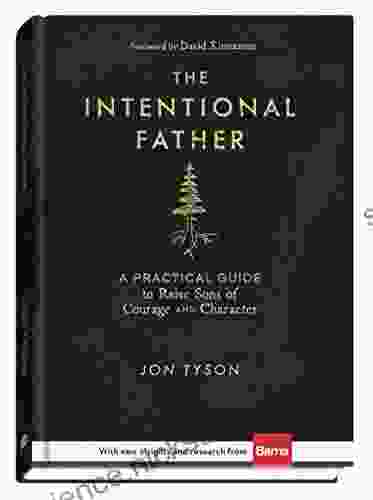
 Jonathan Hayes
Jonathan HayesThe Practical Guide to Raising Courageous and...
As parents, we all want...

 Carlos Fuentes
Carlos FuentesA Journey to Remember: The High Sierra Love Story of...
Prologue: A Wilderness Encounter Beneath...
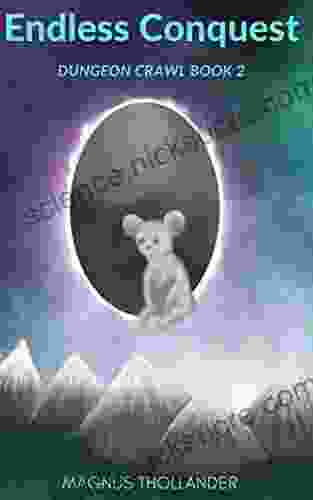
 Douglas Foster
Douglas FosterEndless Conquest: Embark on an Immersive Dungeon Crawl in...
Endless Conquest is a captivating LitRPG...
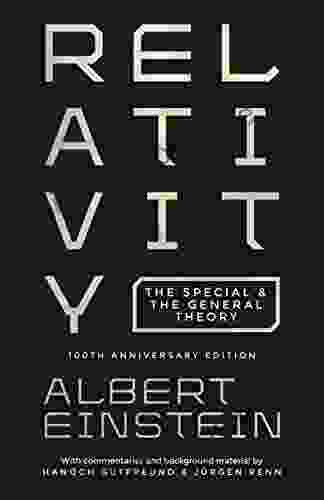
 Caleb Long
Caleb LongThe Special and the General Theory 100th Anniversary...
The year 2015 marks a...
5 out of 5
| Language | : | English |
| File size | : | 132359 KB |
| Text-to-Speech | : | Enabled |
| Screen Reader | : | Supported |
| Enhanced typesetting | : | Enabled |
| Word Wise | : | Enabled |
| Print length | : | 471 pages |


